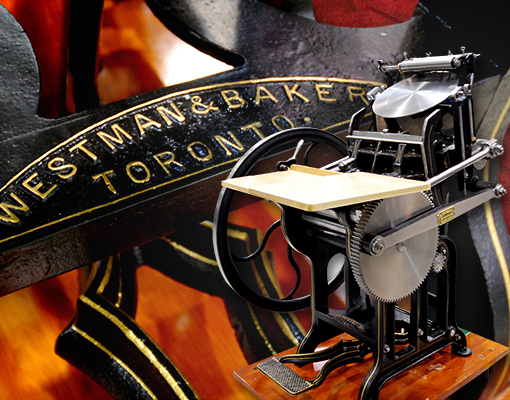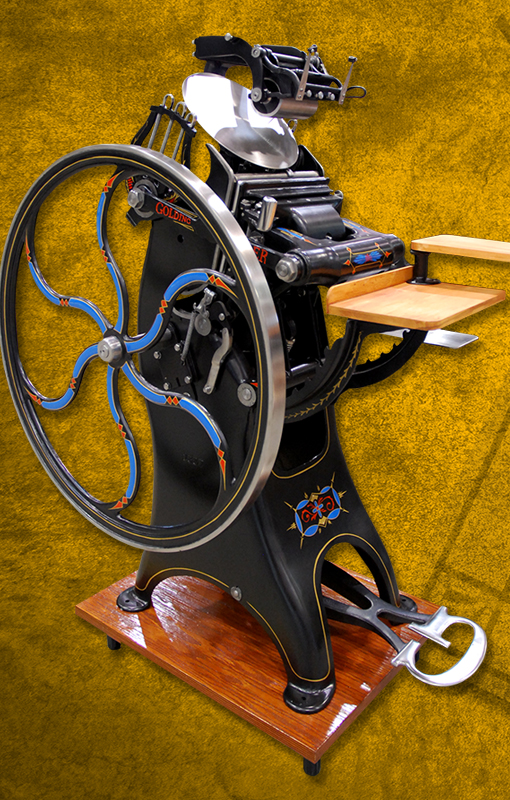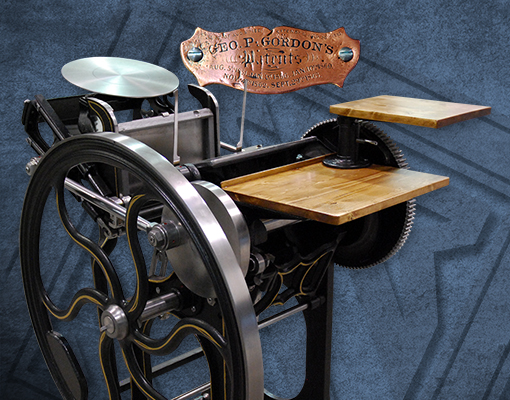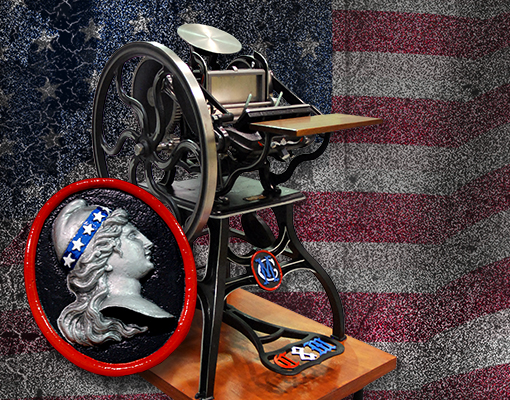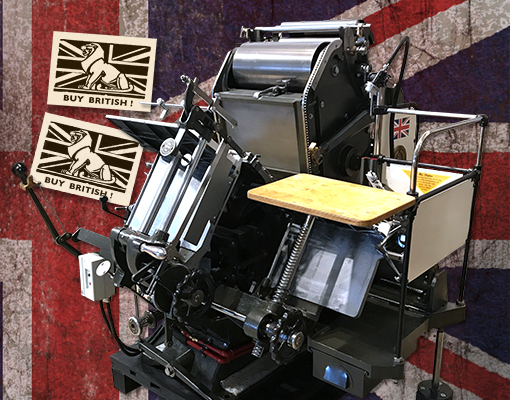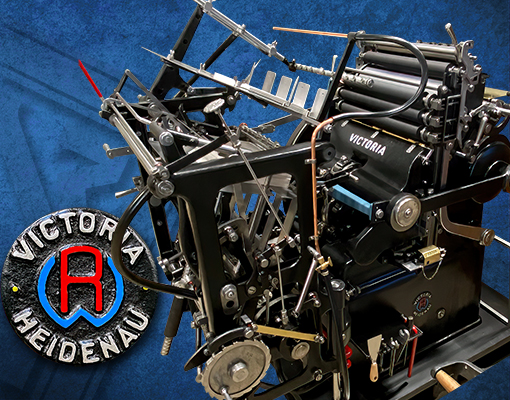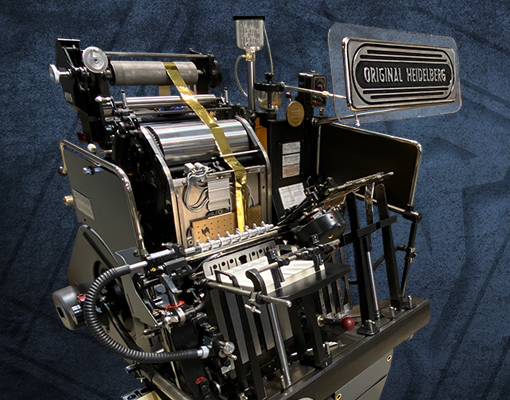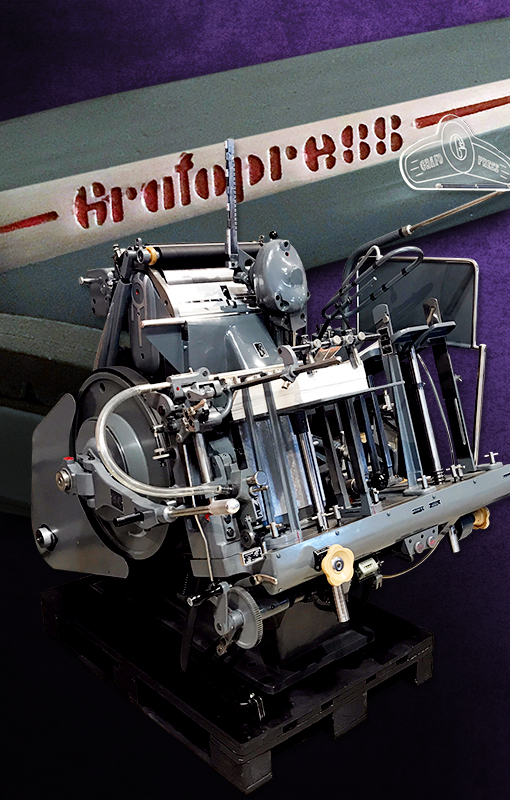The history of the “Platen press” or “jobbing platen," as it was known of any machine that would print less than a full sheet of paper, dates back to Daniel Treadwell of Boston in 1818. Treadwell had experimented with various designs and then followed George Clymer, the inventor of the Columbian, to England, where he never fully completed and produced machines commercially.
Another Bostonian, Stephen Ruggles, did complete a platen in 1839, referred to as the Engine press. Later, in 1851, Ruggles’ developments brought about the first vertical bed platen and laid the path for further breakthroughs. This came about through George Phineas Gordon, a New York printer who, in 1851, brought out the" Alligator.” So nicknamed for the rapid closing of the platen and the number of injuries and crushed fingers it caused.
In Gordon’s system, the platen and bed moved together in a sort of arc, with both the bed and platen coming to meet at impression but allowing the platen to open almost horizontally for ease of feeding. It was said that Gordon, a spiritualist, had the concept come to him in a dream described to him by Benjamin Franklin. So Gordon named his first successful production press the “Franklin.”
Patents were very important in the early years, and although Gordon had a patent, it was running out, meaning anyone could copy his design. This was how the “New Style” Gordon came about in 1872. Although this new press featured a “throw-off,” it was not well received owing to a less attractive hinge-style platen and bed movement.
Gordon presses, both new and old style, were eventually copied and many presses - some we have in our museum - were constructed. In 1901, the Chandler & Price Company of Cleveland purchased the Gordon business, and C&P presses were still being manufactured until the early 1970s. The modern Gordon platen is considered an American invention and quickly found favour on both sides of the Atlantic. English machines, like the ARAB and Cropper, owe much to George Gordon. The HIW also has a Westman & Baker Gordon, manufactured in Toronto.
Further refinements of the platen led to such notable presses as the parallel impression Galley and Colts Armory and the most popular platens - the Heidelberg Tiegel. Heidelberg’s T platen went on to become a fixture around the world and is still in demand.
There are essentially four distinct Platen designs:
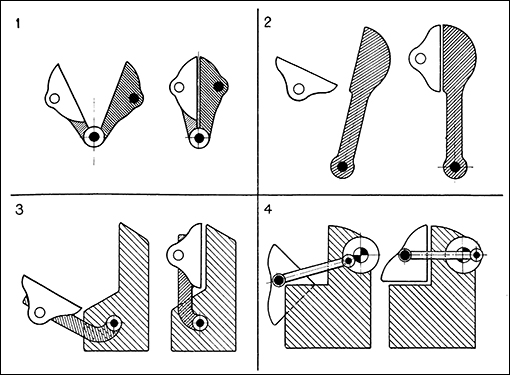
LIBERTY PRINCIPLE (Fig. 1) - a clamshell in a vertical “V” formation where both halves (platen & bed) close in an almost vertical orientation. The Liberty Job Press is an example.
GORDON PRINCIPLE (Fig. 2) - the platen and bed work independently and swing in an arc meeting in an almost vertical position. Because of this independence, the platen is allowed to open in an almost horizontal position for ease of feeding. The Gordon and Chandler & Price is an example.
BOSTON PRINCIPLE (Fig. 3) - the bed remains stationary and usually in a near vertical position. The platen moves in an arc to allow feeding and delivery. The Heidelberg T Platen and Golding Jobber is an example.
GALLEY PRINCIPLE (Fig. 4) - similar to The Boston Principle, Galley is referred to as a parallel impression machine because the platen moves in a parallel arc to vertical bed. A gooseneck cam is used to orchestrate the opening and closing of the platen. This design remains popular for especially for embossing and die-cutting owing to its strength and ability to have enormous pressure applied. An example is the Galley, Victoria and the Colts Armory.
GO TO THE GALLERY »
